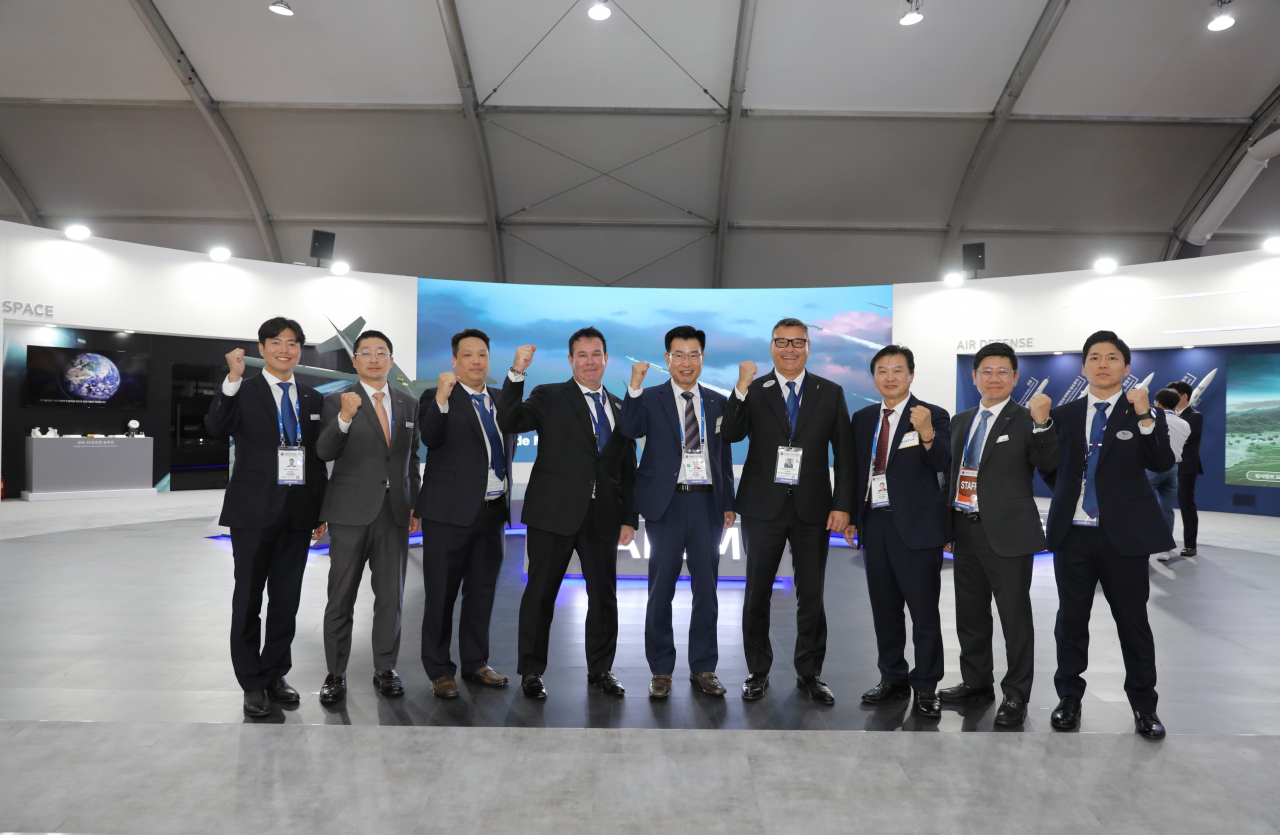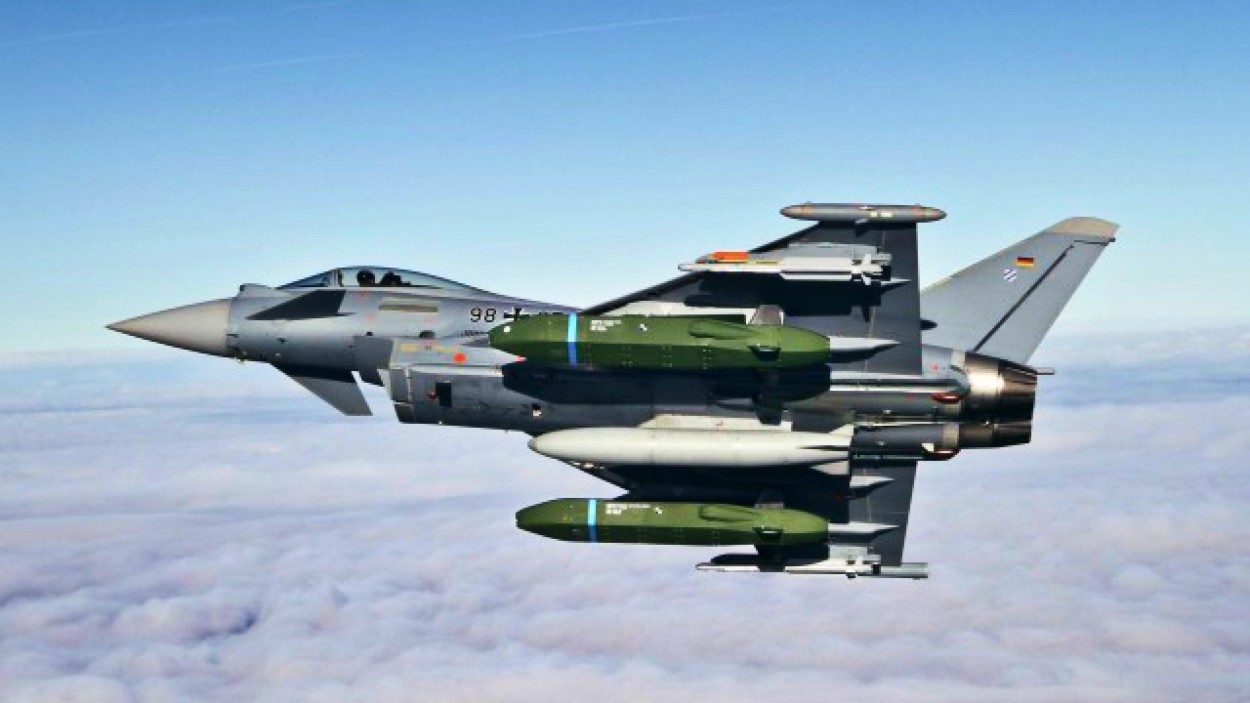South Korean defense company LIG Nex1 and Germany’s Taurus Systems have signed an MOU at Seoul ADEX 2023 to jointly develop an adapted version of the KEPD-350K Taurus missile for the Korea Aerospace Industries (KAI) FA-50.
The program, referred to as the Medium-Range Air-Launched Cruise Missile (MALCM) and designated KEPD 350K-2, is a privately initiated collaboration between the two companies.
This Memorandum of Understanding (MOU) signing represents a partnership leveraging the technical know-how of both companies to meet the increasing demand for advanced missiles, especially in light of the growing export market for FA-50 fighter jets.
This collaboration primarily centers on enhancing and downsizing the current Taurus missiles for global market suitability. The upgraded KEPD 350K-2 is expected to weigh approximately 2,000 pounds and range 250 miles.
This marks the second instance of cooperative research initiatives undertaken by LIG Nex1 and Taurus, with their prior collaboration dating back to 2015 when they developed a ground-launched iteration of the KEPD-350K missile.
The agreement reflects a shared commitment between LIG Nex1 and TAURUS Systems to exchange technological knowledge and create well-defined strategies for the joint development project, which could have a global impact on military defense capabilities.
According to an undisclosed source within the aerospace industry, there is a possibility that the companies will opt to substitute the navigation and guidance systems, warheads, and turbofan engines in the Taurus KEPD 350K-2 with components produced in South Korea as a strategic measure to evade the stringent export controls imposed by the German and US governments.

Meanwhile, the Taurus air-launched cruise missile has garnered significant attention recently due to Ukraine’s persistent appeal to Germany to provide these missiles.
Nonetheless, Germany has displayed reluctance in supplying the missiles, primarily out of concern that it could potentially exacerbate the ongoing conflict.
Germany acquired 600 Taurus missiles between 2005 and 2010, integrating these missiles on both Luftwaffe Tornados and the more modern Eurofighter Typhoon jets.
Furthermore, Spain purchased 43 Taurus missiles for its FA-18 Hornet jets, and South Korea acquired 260 units of the KEPD-350K variant.
These KEPD-350K missiles were deployed on South Korea’s customized F-15K Slam Eagle fighters, a strategic move tightly connected to Seoul’s ‘kill chain’ defense strategy.
This strategy is explicitly designed to swiftly eliminate North Korean command-and-control centers and fortified positions that house nuclear and conventional missile forces, all in the event of a potential conflict.
Development Of KEPD 350K-2 Set To Enhance FA-50 Fighter Exports
The collaboration between LIG Nex1 and TAURUS Systems underlines South Korea’s drive to expand its presence in the global arms industry, with the joint endeavor to co-create the TAURUS KEPD 350K-2 cruise missile serving as both a response to domestic operational requirements and a strategic move to boost South Korea’s defense exports.
Given that the existing TAURUS KEPD 350K missiles are incompatible with the FA-50 fighter jets due to their size, the development of the more compact KEPD 350K-2 model will not only bolster the Republic of Korea Air Force’s capabilities but also tailor to the operational needs of the FA-50s, thereby enhancing the jets’ appeal in the international market.
Engineered for aerial deployment in targeting terrestrial objectives, the missile’s specifications will be customized to align with the export requirements of the FA-50 light fighter.
Christoffer Drevstad, the President of Taurus Systems Korea, has conveyed that the anticipated development timeline for the Taurus KEPD 350K-2 spans less than three years, thus creating a favorable scenario for Korea Aerospace Industries (KAI) to seamlessly incorporate this advanced munition into the FA-50 light fighter’s arsenal for international sales.
The FA-50 has secured numerous international export agreements with several countries, including Poland, Indonesia, the Philippines, and Thailand, integrating it as a vital component of their respective air forces.

The anticipated integration of the KEPD 350K-2 with the FA-50 is poised to significantly enhance the jet’s market appeal, potentially resulting in increased sales and broadening the aircraft’s global presence.
There is also the possibility that South Korea may consider introducing the upgraded missile for the new-generation KF-21 Boramae.
The South Korean Agency for Defense Development spearheads a domestic initiative, the Korean Air-Launched Cruise Missile (KALCM) program, with LIG Nex1 and Hanwha Aero as subcontractors.
However, the KALCM program is not expected to conclude until 2028. Significantly, the development of the KEPD 350K-2 will progress autonomously and separately from the KALCM program.
- Contact the author at ashishmichel(at)gmail.com
- Follow EurAsian Times on Google News




